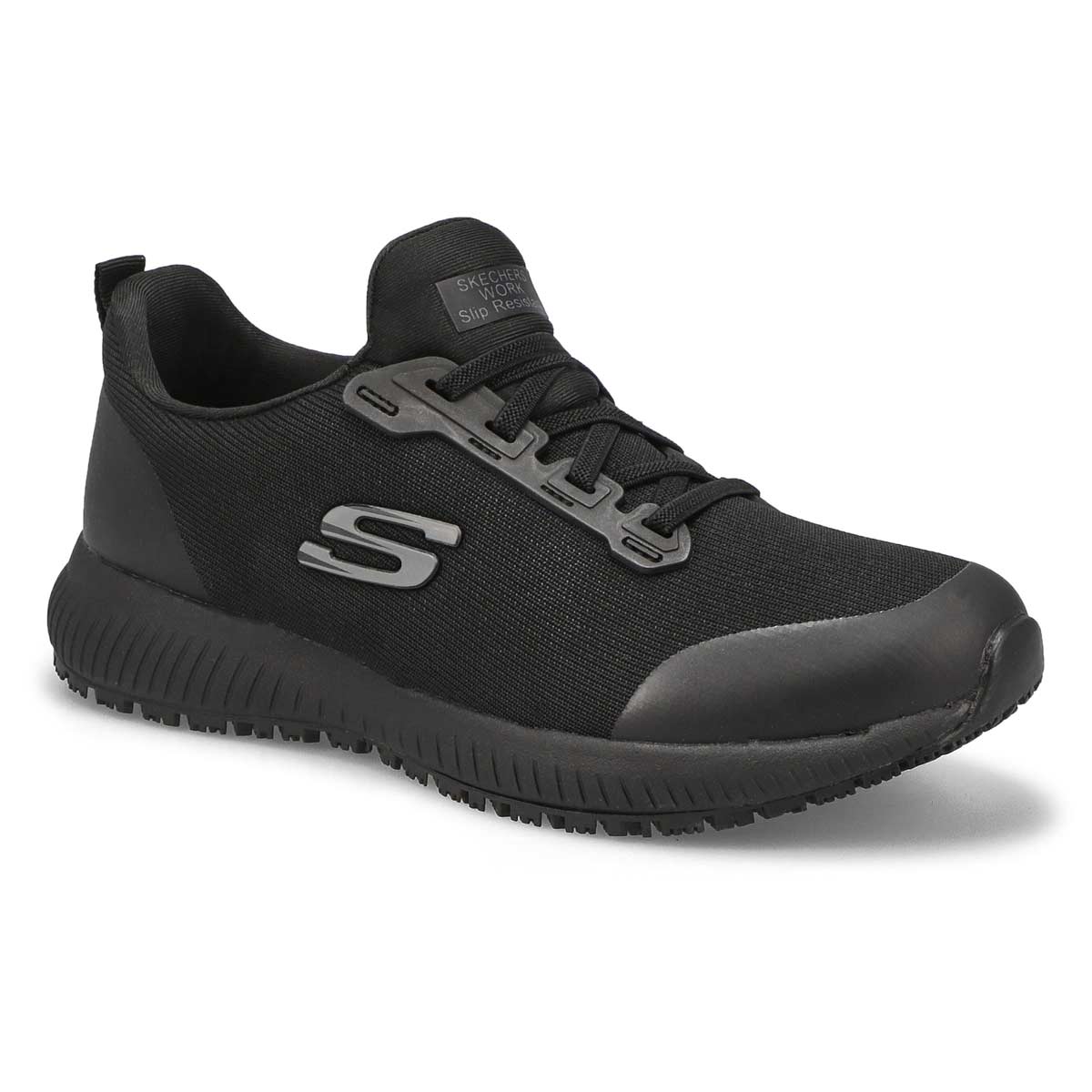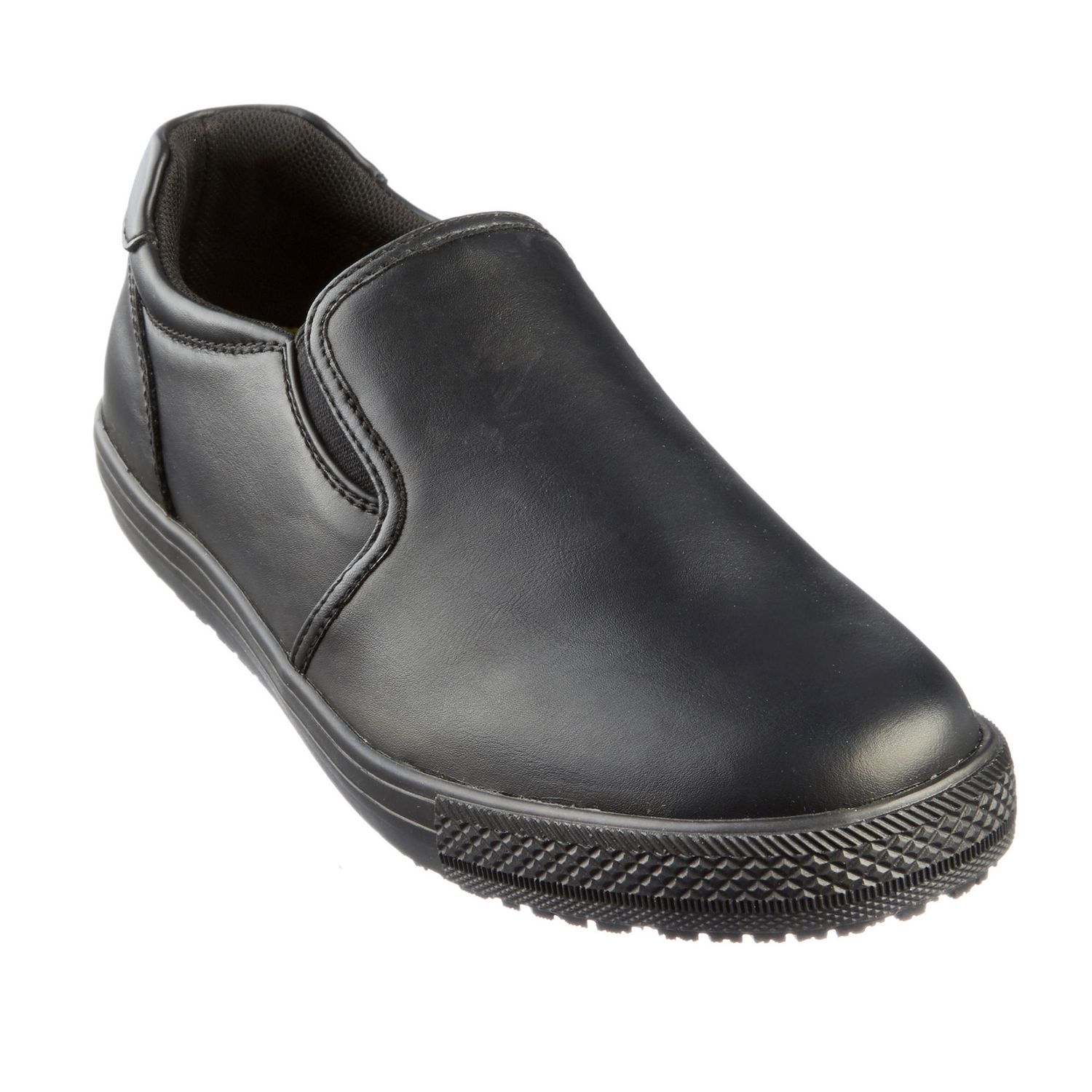In today’s fast-paced work environment, one of the most crucial factors that contribute to workplace safety is the type of footwear you choose. Slip-resistant shoes for work aren’t just a fashion statement; they are essential for protecting your feet and preventing injuries. Whether you’re in a bustling restaurant kitchen, a busy hospital, or a construction site, having the right footwear can make all the difference. In this comprehensive guide, we’ll explore everything you need to know about slip-resistant shoes, including real-world experiences, top brands, and tips to find the perfect pair for your needs.
What Are Slip-Resistant Shoes?
Slip-resistant shoes are specially designed footwear that features enhanced traction to prevent slipping on smooth, wet, or greasy surfaces. These shoes are fundamentally important for people who work in environments prone to spills or other hazards, including healthcare, hospitality, and industrial settings. The sole of a slip-resistant shoe often has unique tread patterns and rubber compounds that provide superior grip compared to standard footwear. This means fewer accidents and injuries in the workplace, allowing workers to focus on their tasks without fear of falling.
Why Slip-Resistant Shoes Matter
In workplaces like hospitals, kitchens, manufacturing plants, and more, employees are at risk of slipping and falling, which can result in serious injuries. According to the National Safety Council, slips, trips, and falls are among the leading causes of workplace injuries. In fact, these incidents account for a significant percentage of lost workdays and consequently, increased healthcare costs. Therefore, investing in high-quality slip-resistant shoes is not just beneficial but essential for any business looking to protect its workforce.
Who Needs Slip-Resistant Shoes?
Slip-resistant shoes are ideal for a range of professionals, including:
- Hospital Staff: Nurses and healthcare workers often work in environments with spills and hazardous materials.
- Restaurant Workers: Waitstaff, cooks, and dishwashers frequently deal with food and liquid spills.
- Construction Workers: They encounter various surfaces and conditions that can lead to slips and falls.
- Warehouse Employees: Those who work in distribution centers often walk on polished concrete that can be slick.
Key Features of Slip-Resistant Shoes
When shopping for slip-resistant shoes, there are several key features to consider that can enhance safety and comfort.

1. Slip-Resistant Sole
The slip-resistant sole is the most critical feature of these shoes. Look for soles made from rubber or specialized materials that provide superior grip. The tread pattern can also influence how well a shoe grips different surfaces. Waffle or herringbone patterns are particularly effective in channeling water away and maximizing surface contact.
2. Comfort and Fit
Comfort is vital, especially if you’re on your feet for long hours. Shoes should fit snugly without pinching and have adequate cushioning to support your feet. Always try shoes on with the kind of socks you’ll wear on the job, as this can affect fit and comfort. An ergonomic design that supports the arch and promotes good posture can make a significant difference.

3. Breathability
Depending on your work environment, breathability can be essential. Materials that allow air circulation help keep your feet dry and comfortable, reducing the risk of blisters and fungal infections.
4. Durability
Investing in high-quality shoes means they should withstand the rigors of daily use. Durable materials not only last longer but also provide better support and protection against workplace hazards.

Real-World Experiences with Slip-Resistant Shoes
Let’s take a look at some real-world experiences from professionals who have made the switch to slip-resistant footwear. These insights can provide valuable information for potential buyers.
Case Study 1: A Nurse’s Perspective
Maria has been a nurse for over five years. She recalls her first job in a busy hospital where the floors were often wet. After experiencing several near slips, she decided to invest in a pair of high-quality slip-resistant shoes. Maria chose shoes from a well-known brand that prioritized both comfort and safety. Her new shoes featured a non-slip sole and a cushioned insole, which allowed her to stay on her feet during long shifts without discomfort. “I wish I had made the switch sooner,” she said. “The confidence I have in my shoes allows me to focus on my patients rather than worrying about slipping.” This experience highlights the practical benefits of investing in slip-resistant shoes.

Case Study 2: A Restaurant Worker’s Testimony
John, a chef at a popular restaurant, faced daily challenges with spills and greasy floors. Frustrated with regular shoes, he purchased a pair of slip-resistant clogs specifically designed for kitchen environments. After a few weeks, John noticed a significant reduction in slips. “I can go about my duties confidently now,” he shared. “Not only do they grip well, but they are also easy to clean.” His story serves as a reminder of how the right footwear can directly influence job performance and safety.
Top Brands for Slip-Resistant Shoes
The market is flooded with options when it comes to slip-resistant shoes. Here’s a roundup of some of the top brands trusted by professionals in various fields:

1. Skechers
Skechers is a well-known brand that offers a wide range of slip-resistant shoes, including sneakers and clogs. Their footwear is designed with comfort in mind, making them ideal for long work shifts. Many users praise Skechers for their lightweight design and stylish appearance, which means you can wear them even outside of work.
2. Dansko
Dansko is a go-to brand for restaurant workers and healthcare professionals. Their clogs are famous for their arch support and slip-resistant soles. Users appreciate their durability and ease of cleaning, making them perfect for high-demand environments.

3. Merrell
Merrell offers outdoor footwear but also provides excellent slip-resistant options suitable for work. Known for their rugged design and breathability, Merrell shoes are popular among warehouse workers and those in the construction industry.
4. Crocs
Crocs have evolved from casual footwear to professional-grade shoes with slip-resistant properties. They are especially favored by those in the food service industry due to their easy maintenance and comfort.

Comparison Table of Popular Slip-Resistant Shoes
| Brand | Model | Slip Resistance | Comfort Level | Price Range | Best For |
|---|---|---|---|---|---|
| Skechers | Skechers Work Sure Track | High | Very Comfortable | $70-$90 | General Work |
| Dansko | Professional Clog | High | Extremely Comfortable | $120-$150 | Healthcare, Food Service |
| Merrell | Jungle Moc Work Shoe | Medium | Comfortable | $90-$110 | Construction, Outdoor Work |
| Crocs | Classic Clog | Medium | Comfortable | $40-$60 | Food Service, Casual Wear |
Tips for Choosing the Best Slip-Resistant Shoes
Choosing the right slip-resistant shoes can be overwhelming, given the multitude of options available. Here are some practical tips to ensure you make the best choice:

1. Assess Your Work Environment
First, consider the specific conditions you’ll be facing. Are there frequent spills? Is the floor made of tile or concrete? Understanding your work environment will guide your shoe choice. For example, those in kitchens may prioritize waterproof materials, while warehouse employees may need more rugged designs.
2. Try Before You Buy
Always try on shoes with the socks you plan to wear at work. Walk around the store to test comfort levels and fit. Make sure there’s enough room in the toe box and that the heel doesn’t slip. If shopping online, refer to the brand’s size guide and read customer reviews regarding fit.
3. Look for Credible Certifications
Check for certifications indicating slip resistance. The American National Standards Institute (ANSI) and the American Society for Testing and Materials (ASTM) provide guidelines and standards for slip-resistant footwear. Shoes that meet or exceed these testing requirements are more likely to perform well in slippery conditions.
4. Consider Maintenance
Depending on your work environment, you may need to clean your shoes regularly. Consider materials that can easily be wiped down or washed. Leather may require more upkeep, while synthetic materials might be easier to clean and maintain.
Pros and Cons of Slip-Resistant Shoes
Before making a purchase, it’s important to weigh the pros and cons of slip-resistant shoes in order to make an informed decision.
Pros
- Enhanced Safety: The primary benefit is reduced risk of slips and falls, leading to a safer work environment.
- Comfortable Options: Many brands prioritize comfort, allowing for extended wear without pain.
- Versatile Styles: Slip-resistant shoes come in various styles, making them suitable for different professions and personal tastes.
- Durability: High-quality slip-resistant shoes are often made from materials that can handle tough conditions.
Cons
- Cost: Quality slip-resistant shoes can be more expensive than regular shoes.
- Weight: Some slip-resistant shoes may be bulkier or heavier than standard footwear, depending on the design.
- Break-In Period: Some shoes may require a break-in period, which could be uncomfortable at first.
Frequently Asked Questions (FAQs)
1. How do slip-resistant shoes work?
Slip-resistant shoes utilize specialized rubber compounds and tread patterns designed to provide optimal grip on slick surfaces. They channel away liquids and maximize surface contact to reduce the risk of slipping.
2. Are all slip-resistant shoes waterproof?
No, not all slip-resistant shoes are waterproof. It’s essential to check the product specifications if water resistance is a requirement for your work environment. Some models are designed specifically for wet conditions.
3. Can slip-resistant shoes be worn casually?
Absolutely! Many slip-resistant shoes come in stylish designs that can be worn casually outside of work. Brands like Skechers and Crocs offer fashionable options that are both functional and stylish.
4. How often should I replace my slip-resistant shoes?
Generally, slip-resistant shoes should be replaced every 6-12 months, depending on your usage and wear. Signs of wear, such as significantly worn-out soles or reduced grip, indicate it’s time for a new pair.
5. What’s the price range for slip-resistant shoes?
The price of slip-resistant shoes can range anywhere from $40 to $150 or more, depending on the brand, materials, and features. Investing in quality footwear can be cost-effective in the long run due to increased durability and safety.
6. Do slip-resistant shoes come in wide sizes?
Many brands offer slip-resistant shoes in wide sizes to accommodate different foot shapes. Always check the size options available when shopping to find the best fit for your feet.
7. Are slip-resistant shoes heavy?
Weight varies by brand and style. While some slip-resistant shoes are designed to be lightweight, others may have additional features that add weight. It’s best to try on different styles to find the right balance of comfort and functionality.
8. Can I use slip-resistant shoes for outdoor work?
Yes, many slip-resistant shoes are suitable for outdoor work, especially those from brands like Merrell, which specialize in rugged designs. Look for features like waterproofing and added durability for outdoor conditions.
9. Are slip-resistant shoes breathable?
Many modern slip-resistant shoes feature breathable materials to keep your feet cool and dry. However, breathability can vary between models, so check product descriptions or reviews for information on ventilation.
10. How do I know if a shoe is truly slip-resistant?
Look for shoes that have been tested and certified by authorities like ANSI or ASTM. Customer reviews, especially those from professionals in similar fields, can also provide insight into the shoe’s performance.
11. Where can I buy slip-resistant shoes?
Slip-resistant shoes can be purchased at physical stores specializing in workwear, safety equipment, or footwear. Alternatively, numerous online retailers offer a wide range of options with customer reviews and ratings to help you make a decision.
Conclusion
Investing in slip-resistant shoes is a smart decision for anyone working in environments where slipping is a risk. With various styles, brands, and features available, it’s crucial to consider your specific work conditions and personal preferences. By prioritizing safety, comfort, and style, you can ensure that you are well-equipped to handle your job while looking good at the same time. So lace up those slip-resistant shoes, walk confidently, and make your workplace a safer place to be!